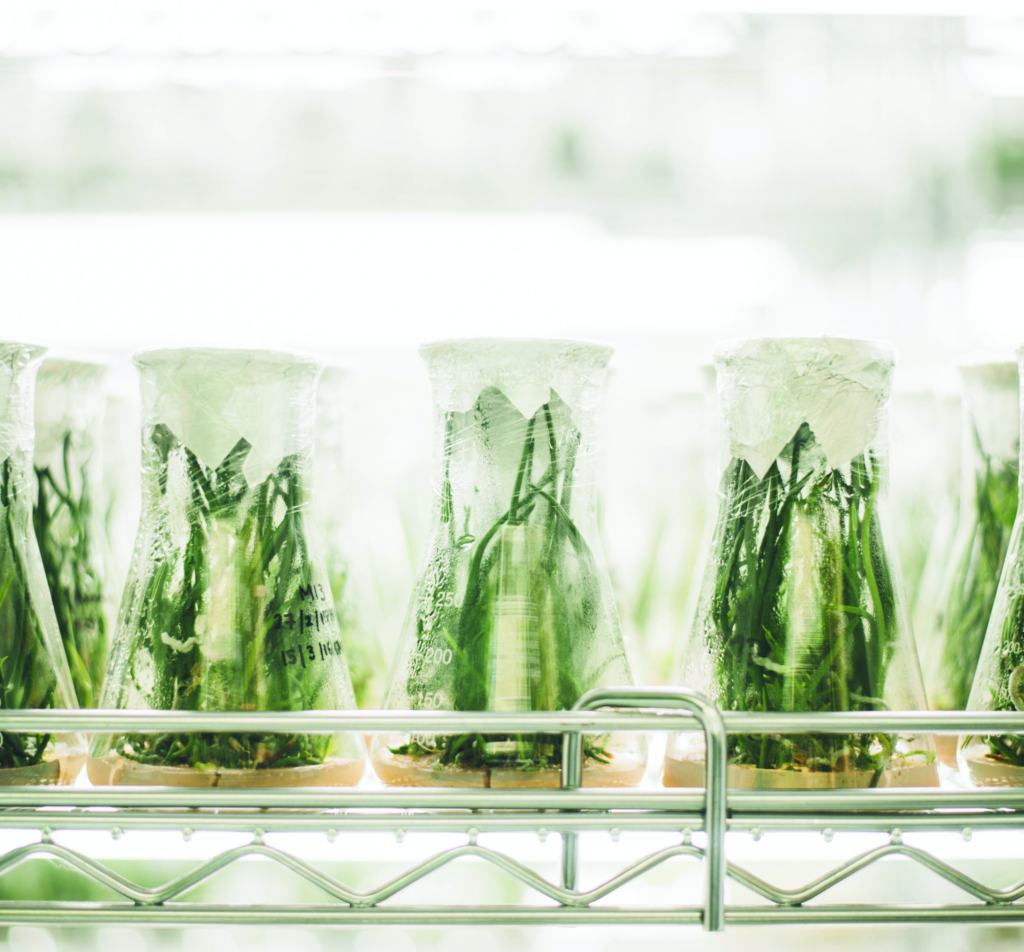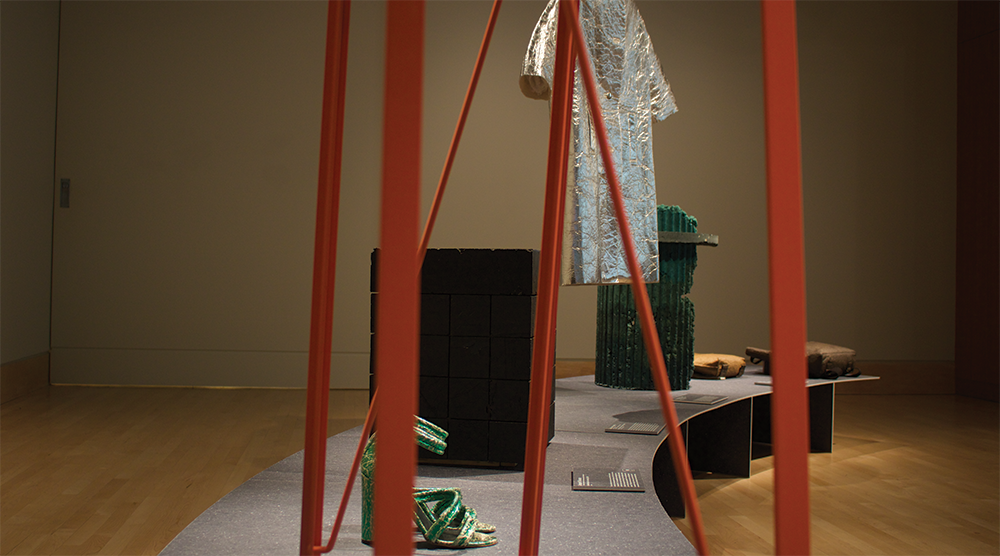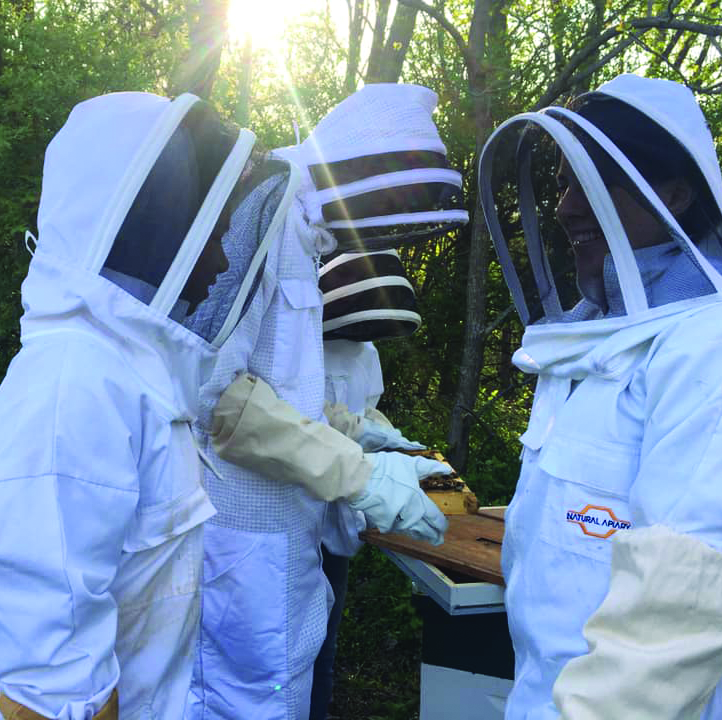One pervasive rumor about Georgetown University’s sustainability persists: The university does not recycle. In fact, the university does recycle, but skepticism leads many students to simply toss all their waste without sorting any of it, making recycling bins unrecyclable. However, student advocates push to raise awareness among their peers and demand action from the administration.
In light of the increasing severity of the climate crisis, students have stepped up, from composting initiatives to campaigns seeking an end to the use of and investment in fossil fuels on campus. The university’s Office of Sustainability and student environmental clubs are the primary sustainability actors on campus.
The tension between getting the university to enact structural change and getting students to understand that their individual actions make a difference in the university’s overall sustainability defines environmental activism and policy on campus. Both goals get hindered by a lack of communication and transparency among the administration, student groups and the general student population. The path to a sustainable campus might be defined by gradual small steps, but student groups have pushed what good environmental practices look like.
Greener Than Ever
Over the years, Georgetown and its students have made strides implementing sustainable practices across the university, from improving its recycling system to building environmentally friendly infrastructure.
The Office of Sustainability is Georgetown’s main driver of sustainability policy and action. Established in 2013 under the Office of Planning and Facilities Management, the office has made efforts to reduce stormwater runoff and increase the amount of sustainable transportation avenues available to students, including bike-friendly roads and free transit options, according to a statement to the Hoya from Audrey Stewart, director of the Office of Sustainability.
To date, seven on-campus buildings have received Leadership in Energy and Environmental Design certification at the gold or silver level, an accreditation standard for sustainable building practices given by the U.S. Green Building Council. The seven LEED-certified buildings are the Rafik B. Hariri Building, Regents Hall, Nevils Hall, Healey Family Student Center, Ryan and Isaac Halls, Pedro Arrupe, S.J. Hall and Thompson Athletic Center.
However, the university still has much to do, according to Victoria Boatwright (COL ’22), the communications coordinator for the Georgetown Renewable Energy and Environmental Network. No building on Georgetown’s campus has obtained a platinum LEED certification, and the university must update older buildings, such as Lauinger Library and Healy Hall, to improve its ecological footprint, according to Boatwright.
“I know that these are buildings are old, so renovating them would be hard,” Boatwright said in an interview with The Hoya. “But that’s what you have to start doing.”
Although renovating entire buildings takes long-term commitments and investments, recycling has become a meaningful channel through which to make campus more sustainable. Since the 2018-19 school year, the university has been transitioning to single stream recycling, meaning students can place all recyclable materials into the same bin. As part of this transition, single stream recycling is being piloted in several locations across campus, including the Intercultural Center and parts of the Leavey Center, according to Giulia Manno, the program and metrics manager in the Office of Sustainability.
“This transition is meant to make recycling simpler for our University community members and reduce recycling contamination,” Manno wrote in an email to The Hoya.
Composting on campus, both pre- and post-consumption, has also become a related area of sustainable engagement. Preconsumption compost, which entails food scraps produced during meal preparation being placed into special bins to be taken to a composting facility, has existed in O’Donovan Hall for over a decade and has now expanded to restaurants at Hoya Court in Leavey.
Post-consumption compost, which entails individual consumers putting their own food waste into composting bins, is newer to sustainability initiatives on campus. This September, Georgetown Renewable Energy and Environmental Network and Compost Cab collaborated to launch a post-consumption compost program in 50 student households, both on and off campus.
Despite the good that smaller projects like recycling and composting can do, the greatest step the university can take toward sustainability is pursuing clean energy, according to GREEN President Amelia Walsh (SFS ’20).
“Any large organization like a university just uses so much energy to light our buildings and power all of our computers and heat and cool everything,” Walsh said. “And we do really well in terms of efficiency, but we still rely heavily on coal and natural gas and fossil fuels.”
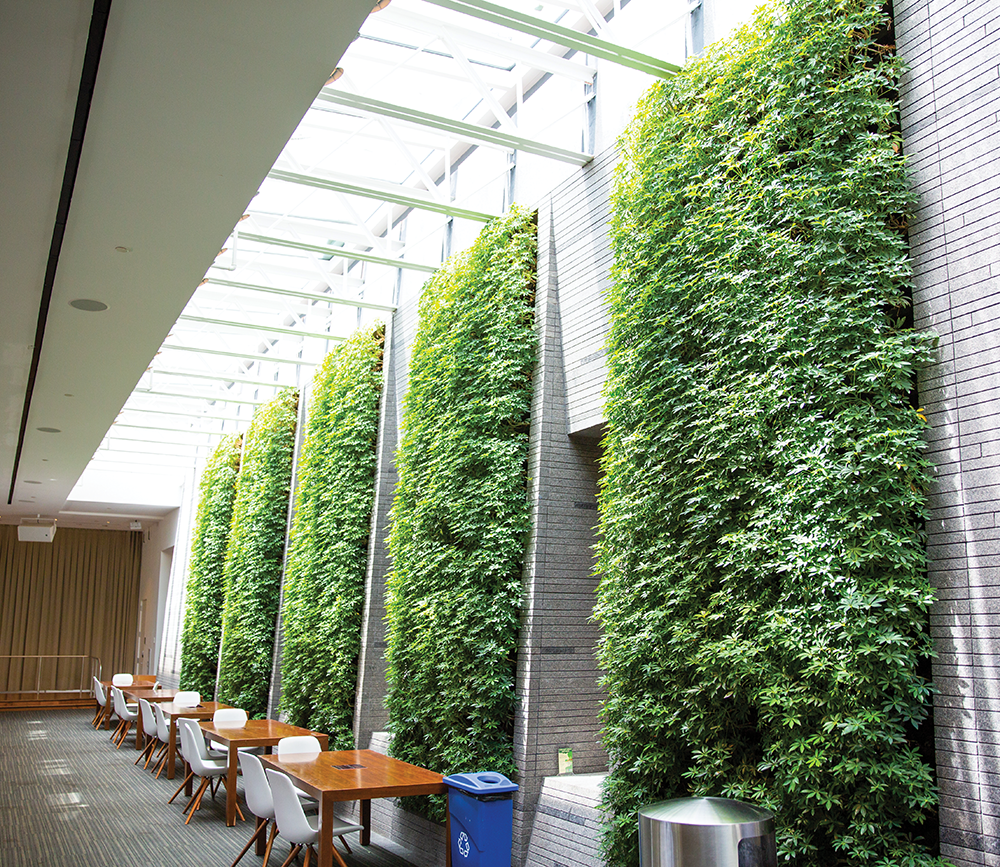
Georgetown receives its power from the Potomac Electric Power Company, and the company sources only 5.8% of its energy from renewable sources.
The university has taken steps to limit its usage of fossil fuels, including a recommendation by the board of director’s Committee on Finance and Administration in June 2018 to avoid investments in companies that profit off tar sands, a form of petroleum that requires more energy and water to extract and process, to produce energy. The recommendation came from Georgetown’s Committee on Investments and Social Responsibility, a committee composed of students, faculty and administrators, after reviewing a proposal put forth by Georgetown University Fossil Free.
GUFF advocates for even more drastic clean energy action by the university, and the club has run a student-led advocacy campaign since 2013 with the sole mission of pushing the university to diverge from fossil fuels, with a secondary focus of fostering transparency in the administration.
“We could talk about a bunch of different things, but I think that it all in the end comes back to energy,” said Boatwright, who is also a member of GUFF.
Bureaucratic Blunders
In its efforts to create a more sustainable campus, Georgetown has hit its fair share of roadblocks from a lack of transparency and poorly thought-out planning.
In September 2017, Georgetown entered an agreement with Origis Energy to install solar panels that would decrease the university’s reliance on fossil fuels by half by 2020. This deal, which proposed cutting down 240 acres of forest and harming the native heritage of the land itself, was met by protests from student groups, members of the Sierra Club and members of the Piscataway Kanoi tribe. This August, Maryland Environment Secretary Ben Grumbles denied Georgetown’s permit request to build the solar farm, citing harm to current projects restoring the Chesapeake Bay watershed.
The initiative is inherently flawed because of its lack of scope and campus input, according to Boatwright.
“They didn’t really talk to the students about it, which was the biggest problem,” she said.
The university has often been opaque on its sustainability efforts, leaving students confused on the status of projects, according to Rowlie Flores (COL ’22), chair of sustainability for the Georgetown University Student Association.
As chair of sustainability, Flores mostly helps to promote events run by student organizations and attempt to bridge the gap between what the student body wants and the administration’s own sustainability projects.
“I try to lead open forums, once in a while, to discuss issues with certain clubs, and these are open to the public usually.” Flores said in an interview with The Hoya. “It’s kinda hard to get admin to attend these meetings.”
Boatwright agreed the university has a broader problem with communication and transparency — one that is not limited to the administration itself. Student groups also have difficulty coordinating their various efforts because of little communication and collaboration among groups on projects.
In just one example of communication failures leading to less comprehensive sustainability campaigns, the rumor that Georgetown does not properly recycle or does not recycle at all after the recycling manager position of facilities was left vacant in 2012. This position has remained vacant, and recycling is now managed by the Office of Sustainability.
Even though the university does recycle, too much nonrecyclable waste in recycling bins can make an entire bin unrecyclable, according to Boatwright.
The skepticism in Georgetown’s recycling program then sets the university back because doubtful students who throw away their waste indiscriminately cause the very lack of recycling that they notice, according to Boatwright.
“It’s not a problem of the institution choosing whether or not to recycle; it’s a problem of whether the individuals choose whether or not to recycle,” Boatwright said. “I hate when people are like ‘Oh, it doesn’t matter if I do this or not.’ Because if you think that, then any other person can think that, and that’s how waste is generated.”
Small Steps Toward a Promising Future
Though small, the community of students involved in environmental clubs on campus constantly makes small, meaningful gains.
The discourse around climate change and environmentalism has rapidly matured to include tangible, concrete solutions to intensifying environmental problems, according to Walsh.
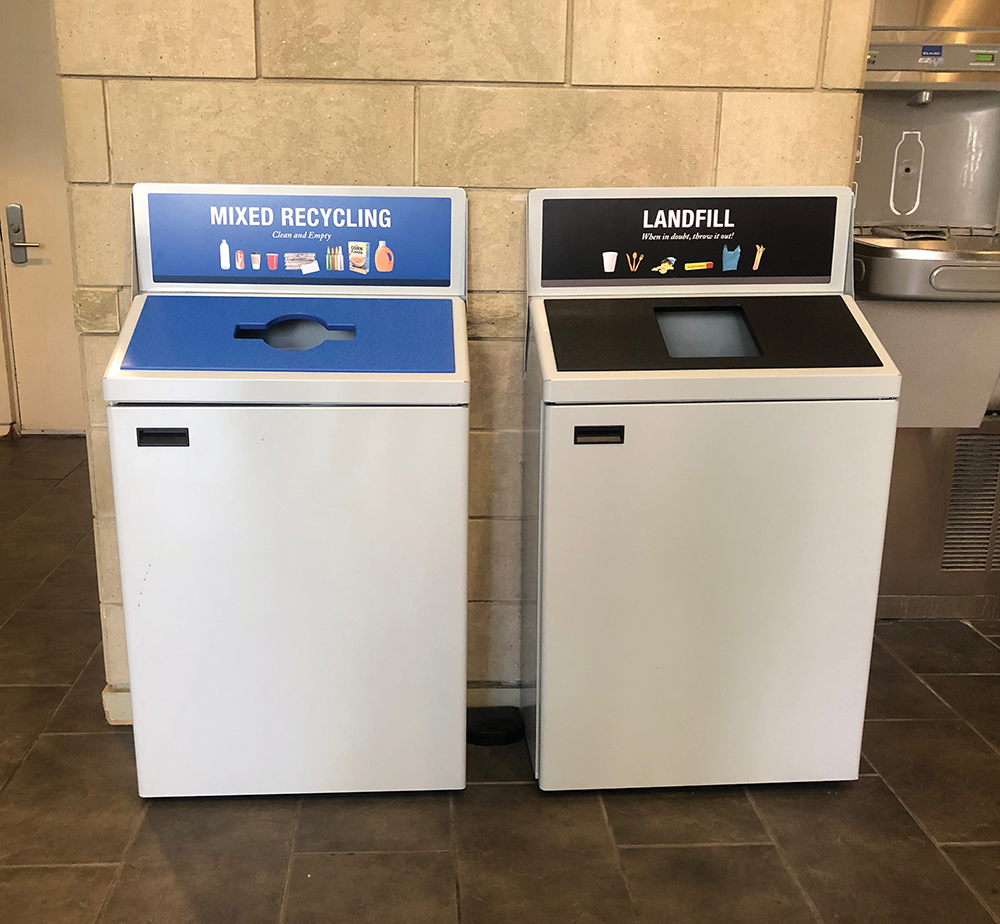
“My freshman year, people were like, ‘We should have a trash clean up!’ That’s great.” Walsh said. “But now, people are coming to me all the time asking, you know, ‘Why isn’t GREEN talking more about completely divesting from fossil fuels?’ It’s a much more nuanced and interesting point.”
The membership of GREEN has increased over the past several years, signaling the increased urgency students are feeling, according to Walsh.
“Our membership when I was a freshman was maybe 10 people per meeting,” Walsh said. “Now we easily have 60 people per meeting, so it’s really skyrocketed.”
These on-campus environmental advocacy groups are acutely aware of the need to communicate with administration, according to Boatwright, especially as the university sets grand goals and works to improve the shortcomings of recent developments.
“At Georgetown, [if we raise student awareness], it only makes changes for four years,” Boatwright said. “Where if you engage the administration and the faculty, that’s long term change.”
Student activists’ optimism is evident in the smaller-scale projects that find success and have the potential to make structural, lasting changes. Flores praised the recent paper-free initiative passed by GUSA senate that urged the university to switch to paperless academic practices. And Walsh gushed as she explained the aquaponics garden set up in the Maker Hub as a division of GREEN, as well as the success of the 50 households that now have a compost system.
Overall, students agreed the most worthwhile undertaking by the on-campus environmental groups is to empower students to make smarter, greener choices every day by themselves.
“When we talk about what GREEN does, it’s education, advocacy and enjoyment of sustainability,” Walsh said. “We’ve been really successful in creating a much larger way for people to become engaged in sustainability in a natural way, whether it’s recycling, composting or energy conservation.”
Bit by bit, environmentally conscious students like Flores see that individual actions can compound and turn into more lasting change.
“A lot of my projects are more focused on individual actions, things that people can do themselves,” Flores said. “Just small things. Because small things add up.”








